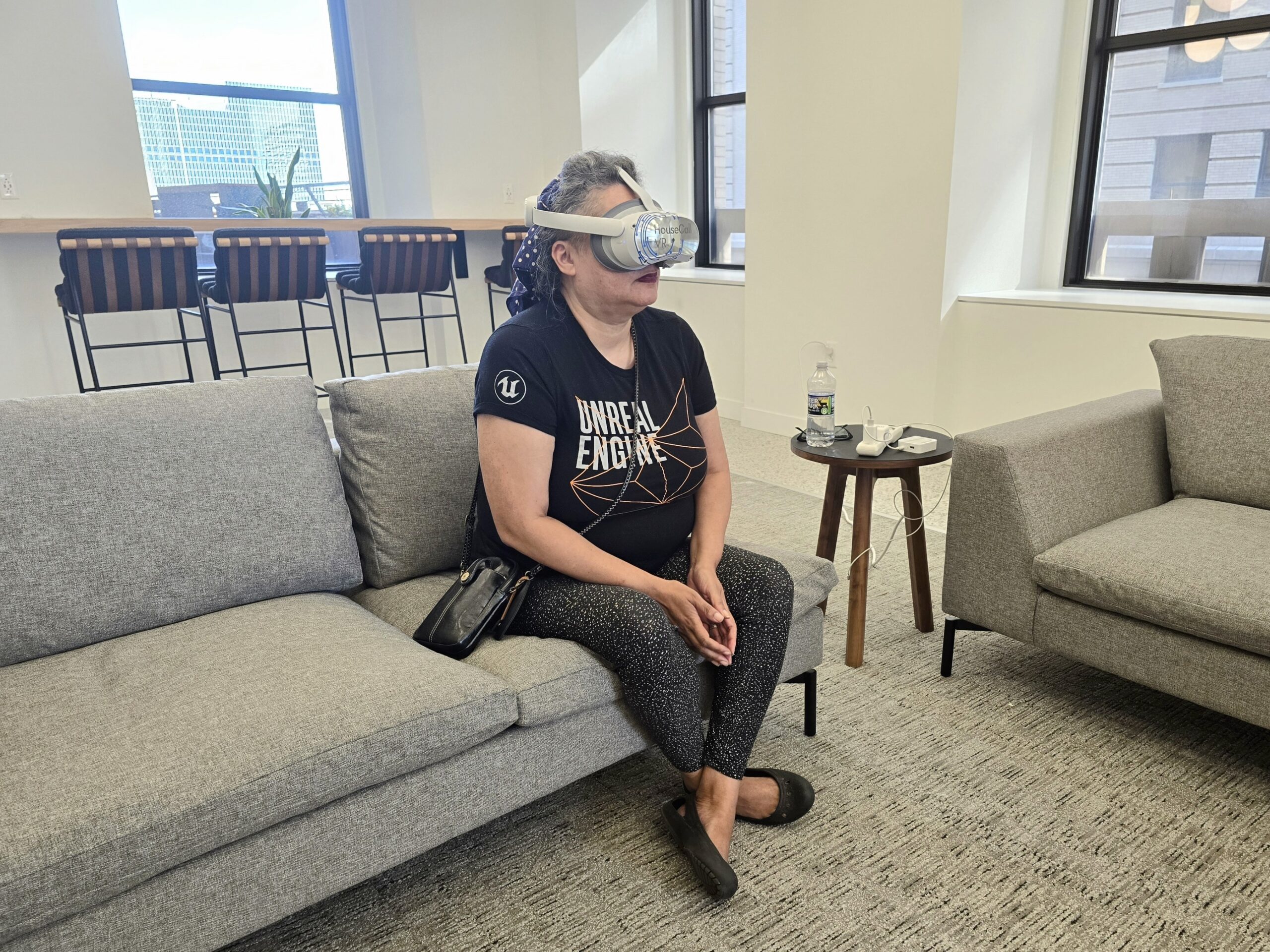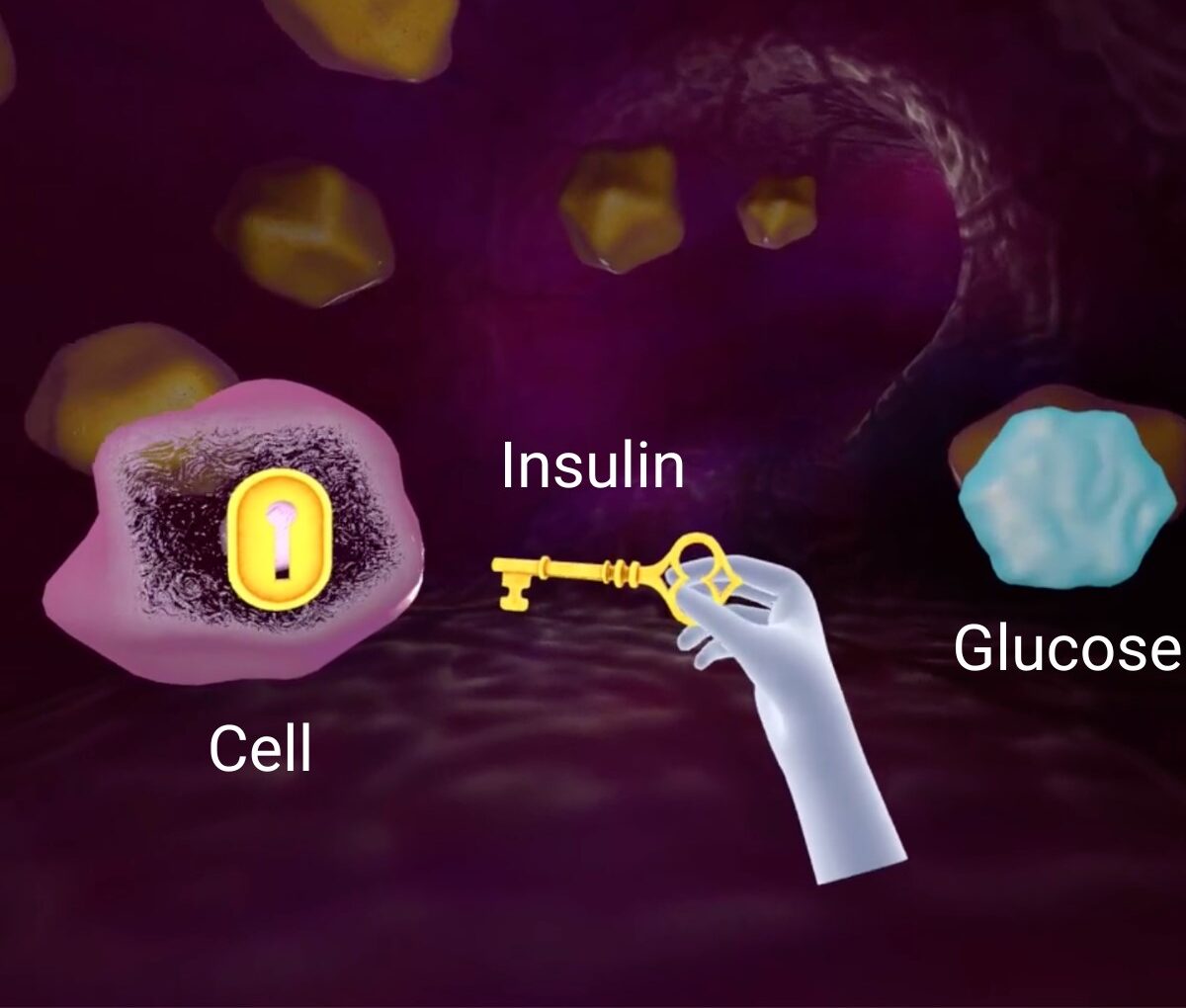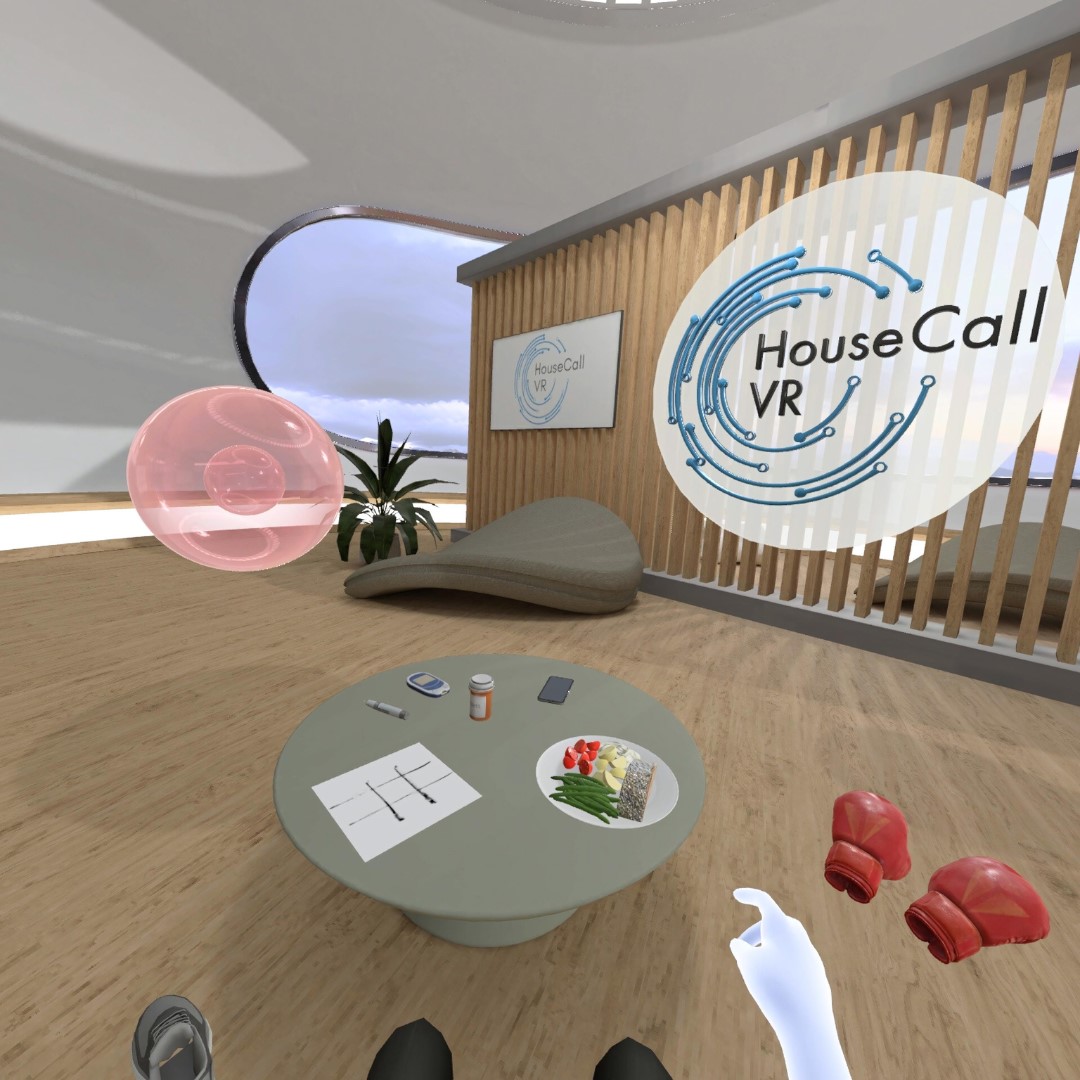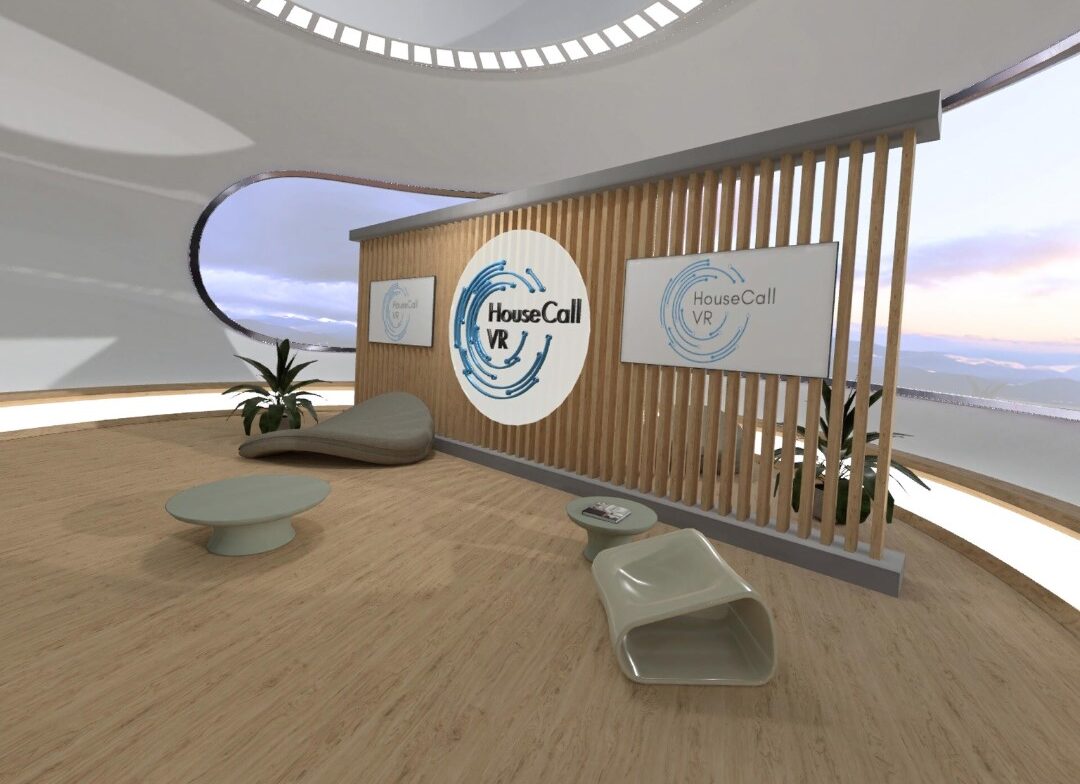I first met Dr. Linda Ciavarelli as a Horizon Worlds avatar for my very first immersive, virtual reality interview.
A Wilmington podiatrist, Ciavarelli cofounded HouseCall VR in 2022 as an interactive healthcare hub. Meta’s Horizon Worlds users could use the tech to explore exhibits about podiatry, dermatology and women’s health, complete with games, storytelling and an event space where healthcare professionals gave live talks.

It was a great idea in medical extended reality (MXR) that was ahead of its time. Now, two years later, useful immersive worlds like HouseCall VR still haven’t caught on the way gaming and concert worlds have, areas Meta itself focuses on as it goes global.
“Using immersive tech to teach people about their health has been the mission all along,” Ciavarelli told Technical.ly. “How we do that, where we do that, what that looks like? That’s certainly evolved.”
The new HouseCall VR meets users at their health care facilities
At the Startup302 pitch competition in May, Ciavarelli pitched a new HouseCall VR that brings its MXR technology to patients via their doctors’ offices, clinics or pharmacies. This eliminates the need for a patient to have a VR headset, a major drawback of the Horizon Worlds iteration, and it can help busy doctors deliver information while freeing up time to see other patients.
Ciavarelli knows all about the challenges of fitting in patients. She regularly sees around 30 patients on clinic days at Brandywine Podiatry in Wilmington.
We met this time in person at The Mill for a demo of the new HouseCall VR platform after one of those busy workdays.
The new model works with a PICO headset, an enterprise-level piece of gear selected for its clear passthrough or the view of the room when not in an immersive environment. There’s no setup routine for first-time users and simple hand tracking.

Most of Ciavarelli’s patients are in their 80s and have never used VR before, so every step of the experience is designed with that in mind. It starts off in augmented reality where the first thing you see is the room you’re in, before easing into an immersive animation that virtually takes you inside the body to see how things, including treatments, work.
Keeping the user interface simple to help patients learn with ease
As a podiatrist, many of Ciavarelli’s patients have diabetes, a condition that can be hard to explain.
The diabetes module, one of the first made for the platform, takes you under the skin to see how cells absorb glucose with naturally occurring insulin, represented as a key the patients can reach out that turn to let the glucose in. It shows what happens when there isn’t enough insulin produced, and how insulin treatment allows the cells to unlock.

The interactive controls are more like using a tablet than most AR/VR hand controls that require pointing or looking and pinching.
“I’ve never had a patient not get it,” Ciavarelli said.
After swimming with the cells, the patient is transported to a virtual clinic room with a table covered with items, including a smartphone, a plate and a blood test kit. It’s a relaxing space with a mountain view beyond a virtual terrace.

In this part of the module, the patient learns about different aspects of their day-to-day care, represented by the items. A voice, which can be set to English or Spanish, explains each element, and the patient interacts with an item. For example, a diabetes-friendly meal of salmon and vegetables appears on the plate, and the patient “eats” it by tapping on each food.
The module can be revisited at home in 2D via a connected app. Introducing it via the fully immersive experience is effective in several ways. It’s distraction-free and the environment is calming compared to an exam room. The doctor can know that the patient is getting accurate information even if they’re not present, and unlike a stack of brochures, the patient can’t just ignore it.
The diabetes module in the demo is about eight minutes long. Ciavarelli hopes to get it down to a tight five minutes before introducing it to her patients.
Bringing HouseCall VR into more offices
Of course, she’s not just aiming to bring this to her own patients. In June, HouseCall VR announced a collaboration with the U.S. Veterans Health Administration Innovator’s Network.
Veteran healthcare organizations were early adopters to VR therapy. The first known usage of medical VR was back in 1993 when it was used at Emory Healthcare Veterans Program to treat psychological disorders. Today, immersive therapy for PTSD is widely used.
Also in June, HouseCall VR announced a partnership with UGA College of Pharmacy, a project that aims to make immersive pharmaceutical information accessible to patients at pharmacies.
“We’re going to be developing content around medication adherence,” Ciavarelli said. “Say you get a prescription for an anti-inflammatory. You take that to the pharmacy, you put on a headset and see how the anti-inflammatory works, why you should take it and what happens if you don’t.”
HouseCall VR has also had interest from other doctors, including a Paoli plastic surgeon who had a module made to explain a complicated skin rejuvenation procedure.
Prioritizing patient accessibility and finding more customers
HouseCall VR content is developed by its Ukraine-based design team to be accessible offline, so no matter where a healthcare provider is, they can use it.
“Most hospitals have terrible WiFi,” Ciavarelli said. “Or if you’re in a rural pharmacy in Georgia, if you’re on a reservation in New Mexico, these are places with low and no WiFi, so we’re creating content that’s available to everyone.”
The goal is to put immersive healthcare education in as many hospitals, clinics and pharmacies as possible, and to make them as easy to use as a Wawa order screen.
Still, Ciavarelli hopes to return to Horizon Worlds, where you can still visit the HouseCall VR hub and explore the exhibits.
“I’d love to continue leveraging social VR, basically like our social media,” Ciavarelli said. “I think there’s a place for that to happen. But from a resource perspective, I just couldn’t do lectures that were cool but weren’t necessarily bringing any business focus forward.”
Updated on July 10 at 2 p.m. to remove an incorrect mention about the extent of HouseCall VR’s work with the VA.







